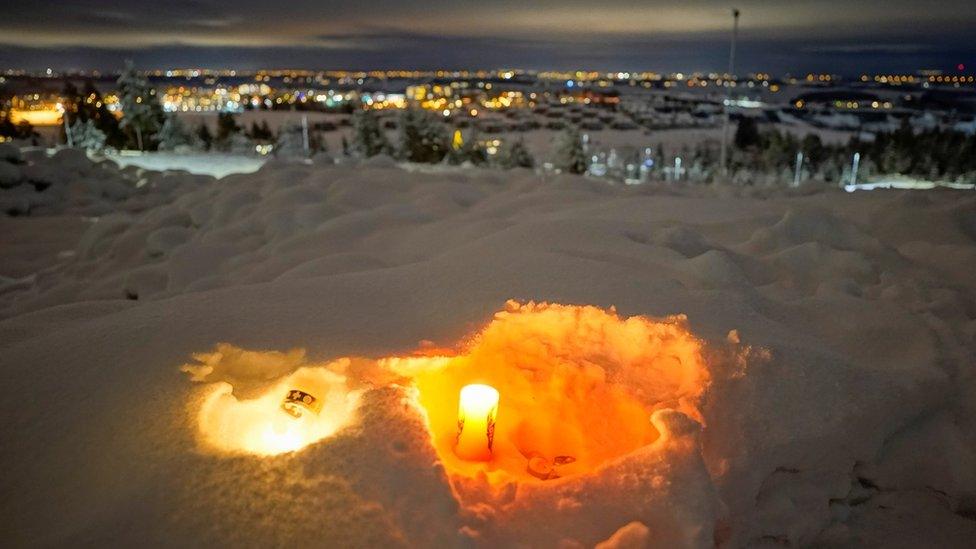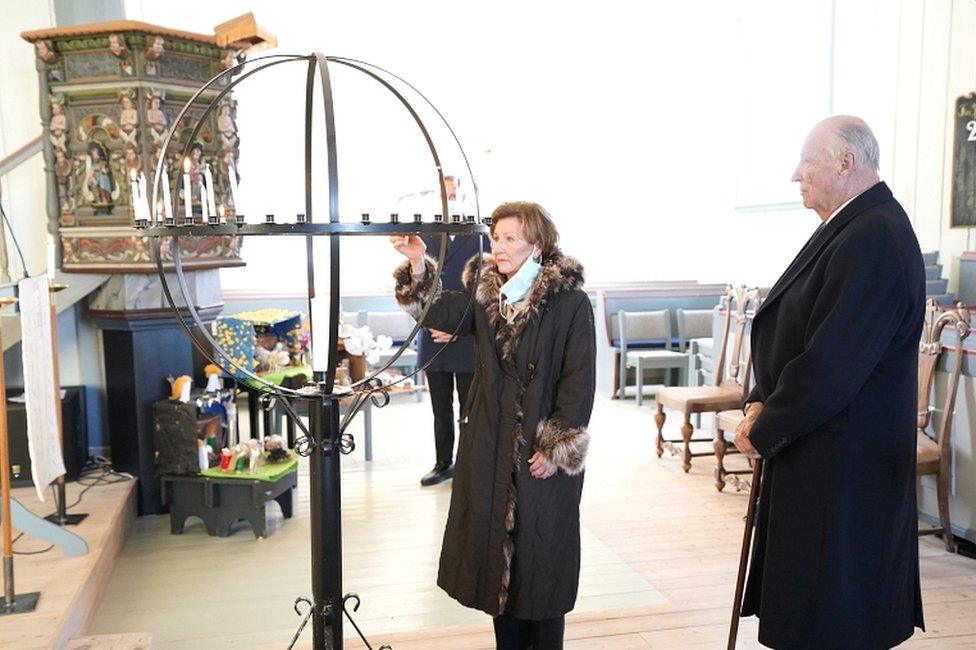Norway landslide: Seventh body found as rescuers continue search
- Published

Candles burned for those who have died in the landslide at Ask
Seven bodies have now been found in the search for the missing after a massive landslide that destroyed homes in Norway last week, police have said.
Four bodies were discovered on Friday and Saturday, and another three on Sunday. The first victim to be found was named as Eirik Grønole, 31.
Several people remain missing following the hillside collapse that sent mud into the village of Ask on Wednesday.
Rescuers are working to find survivors, but chances of this are fading.
Police said the latest body was recovered near where two others had been found, but they gave no further details.
Five of the victims have been identified, including a 40-year-old man and his two-year-old daughter.
Another 10 people were injured.
The king and queen of Norway visited the site of the landslide on Sunday.

Queen Sonja and King Harald lit candles in Gjerdrum Church in memory of the victims
"I'm having trouble finding something to say, because it's absolutely horrible," King Harald said after the visit.
"This terrible event impacts us all. I sympathise with you who are beginning the new year with sadness and uncertainty," he said.
What's the latest with rescue efforts?
A shortage of daylight in the Norwegian winter has proved one of the challenges at the scene in Gjerdrum municipality, 25km (15 miles) north-east of Oslo.
Rescuers are also contending with freezing temperatures and the clay ground proving too unstable for emergency workers to walk on.
Helicopters and drones spent two days searching the area before Police Commander Roy Alkvist said one or two houses appeared safe to enter.
Rescuers began moving into the danger zone on Styrofoam boards; the bright orange boards were laid down on the mud in a domino-effect as rescuers tried to reach the wrecked homes.
Aerial footage shows the scale of the landslide
What do we know of the landslide?
Residents of Ask began calling emergency services at around 04:00 local time on Wednesday telling them that their houses were moving, police said.
"There were two massive tremors that lasted for a long while and I assumed it was snow being cleared or something like that," Oeystein Gjerdrum, 68, told broadcaster NRK.
"Then the power suddenly went out, and a neighbour came to the door and said we needed to evacuate, so I woke up my three grandchildren and told them to get dressed quickly."


More than 30 homes were destroyed, with others teetering on the edges of the deep crater that was left by the landslide. At least 1,000 residents were evacuated from the area.
The landslide was a so-called "quick clay slide" measuring about 300m by 700m (985ft by 2,300ft), a spokeswoman for the Norwegian Water Resources and Energy Directorate (NVE) told AFP.
Quick clay is a kind of clay found in Norway and Sweden that can collapse and behave as a fluid when it comes under stress.
Broadcaster NRK said heavy rainfall may have made the soil unstable, but questions have since emerged over why construction was permitted in the area.
A 2005 geological survey labelled the area as at high risk of landslides, according to a report seen by the broadcaster TV2. Despite this, the homes were built there three years later.